#tribal nations
Text
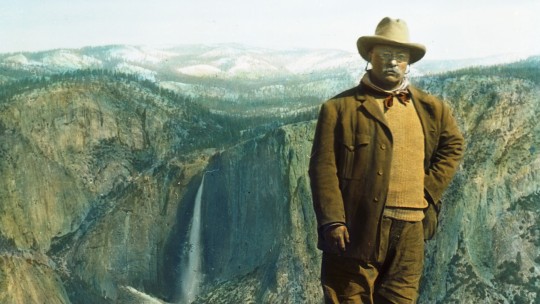
LETTERS FROM AN AMERICAN
April 7, 2024 (Sunday)
HEATHER COX RICHARDSON
APR 08, 2024
In August 1870 a U.S. exploring expedition headed out from Montana toward the Yellowstone River into land the U.S. government had recognized as belonging to different Indigenous tribes.
By October the men had reached the Yellowstone, where they reported they had “found abundance of game and trout, hot springs of five or six different kinds…basaltic columns of enormous size” and a waterfall that must, they wrote, “be in form, color and surroundings one of the most glorious objects on the American Continent.” On the strength of their widely reprinted reports, the secretary of the interior sent out an official surveying team under geologist Ferdinand V. Hayden. With it went photographer William Henry Jackson and fine artist Thomas Moran.
Banker and railroad baron Jay Cooke had arranged for Moran to join the expedition. In 1871 the popular Scribner’s Monthly published the surveyor’s report along with Moran’s drawings and a promise that Cooke’s Northern Pacific Railroad would soon lay tracks to enable tourists to see the great natural wonders of the West.
But by 1871, Americans had begun to turn against the railroads, seeing them as big businesses monopolizing American resources at the expense of ordinary Americans. When Hayden called on Congress to pass a law setting the area around Yellowstone aside as a public park, two Republicans—Senator Samuel Pomeroy of Kansas and Delegate William H. Clagett of Montana—introduced bills to protect Yellowstone in a natural state and provide against “wanton destruction of the fish and game…or destruction for the purposes of merchandise or profit.”
The House Committee on Public Lands praised Yellowstone Valley’s beauty and warned that “persons are now waiting for the spring…to enter in and take possession of these remarkable curiosities, to make merchandise of these bountiful specimens, to fence in these rare wonders so as to charge visitors a fee, as is now done at Niagara Falls, for the sight of that which ought to be as free as the air or water.” It warned that “the vandals who are now waiting to enter into this wonderland will, in a single season, despoil, beyond recovery, these remarkable curiosities which have required all the cunning skill of nature thousands of years to prepare.”
The New York Times got behind the idea that saving Yellowstone for the people was the responsibility of the federal government, saying that if businesses “should be strictly shut out, it will remain a place which we can proudly show to the benighted European as a proof of what nature—under a republican form of government—can accomplish in the great West.”
On March 1, 1872, President U. S. Grant, a Republican, signed the bill making Yellowstone a national park.
The impulse to protect natural resources from those who would plunder them for profit expanded 18 years later, when the federal government stepped in to protect Yosemite. In June 1864, Congress had passed and President Abraham Lincoln signed a law giving to the state of California the Yosemite Valley and nearby Mariposa Big Tree Grove “upon the express conditions that the premises shall be held for public use, resort and recreation.”
But by 1890 it was clear that under state management the property had been largely turned over to timber companies, sheep-herding enterprises, and tourist businesses with state contracts. Naturalist John Muir warned in the Century magazine: “Ax and plow, hogs and horses, have long been and are still busy in Yosemite’s gardens and groves. All that is accessible and destructible is rapidly being destroyed.” Congress passed a law making the land around the state property in Yosemite a national park area, and the United States military began to manage the area.
The next year, in March 1891, Congress gave the president power to “set apart and reserve…as public reservations” land that bore at least some timber, whether or not that timber was of any commercial value. Under this General Revision Act, also known as the Forest Reserve Act, Republican president Benjamin Harrison set aside timber land adjacent to Yellowstone National Park and south of Yosemite National Park. By September 1893, about 17 million acres of land had been put into forest reserves. Those who objected to this policy, according to Century, were “men [who] wish to get at it and make it earn something for them.”
Presidents of both parties continued to protect American lands, but in the late nineteenth century it was New York Republican politician Theodore Roosevelt who most dramatically expanded the effort to keep western lands from the hands of those who wanted only their timber and minerals.
Roosevelt was concerned that moneygrubbing was eroding the character of the nation, and he believed that western land nurtured the independence and community that he worried was disappearing in the East. During his presidency, which stretched from 1901 to 1909, Roosevelt protected 141 million acres of forest and established five new national parks.
More powerfully, he used the 1906 Antiquities Act, which Congress had passed to stop the looting and sale of Indigenous objects and sites, to protect land. The Antiquities Act allowed presidents to protect areas of historic, cultural, or scientific interest. Before the law was a year old, Roosevelt had created four national monuments: Devils Tower in Wyoming, El Morro in New Mexico, and Montezuma Castle and Petrified Forest in Arizona.
In 1908, Roosevelt used the Antiquities Act to protect the Grand Canyon.
Since then, presidents of both parties have protected American lands. President Jimmy Carter rivaled Roosevelt’s protection of land when he protected more than 100 million acres in Alaska from oil development. Carter’s secretary of the interior, Cecil D. Andrus, saw himself as a practical man trying to balance the needs of business and environmental needs but seemed to think business interests had become too powerful: “The domination of the department by mining, oil, timber, grazing and other interests is over.”
In fact, the fight over the public lands was not ending; it was entering a new phase. Since the 1980s, Republicans have pushed to reopen public lands to resource development, maintaining even today that Democrats have hampered oil production although it is currently, under President Joe Biden, at an all-time high.
The push to return public lands to private hands got stronger under former president Donald Trump. On April 26, 2017, Trump signed an executive order—Executive Order 13792—directing his secretary of the interior, Ryan Zinke, to review designations of 22 national monuments greater than 100,000 acres, made since 1996. He then ordered the largest national monument reduction in U.S. history, slashing the size of Utah’s Bears Ears National Monument by 85%—a goal of uranium-mining interests—and that of Utah’s Escalante–Grand Staircase by about half, favoring coal interests.
“No one better values the splendor of Utah more than you do,” Trump told cheering supporters. “And no one knows better how to use it.”
In March 2021, shortly after he took office, President Biden announced a new initiative to protect 30% of U.S. land, fresh water, and oceans areas by 2030, a plan popularly known as 30 by 30. Also in March 2021, Supreme Court chief justice John Roberts urged opponents of land protection to push back against the Antiquities Act, saying the broad protection of lands presidents have established under it is an abuse of power.
In October 2021, President Biden restored Bears Ears and Escalante–Grand Staircase to their original size. “Today’s announcement is not just about national monuments,” Interior Secretary Deb Haaland, a member of the Laguna Pueblo in New Mexico, said at the ceremony. “It’s about this administration centering the voices of Indigenous people and affirming the shared stewardship of this landscape with tribal nations.”
In 2022, nearly 312 million people visited the country’s national parks and monuments, supporting 378,400 jobs and spending $23.9 billion in communities within 60 miles of a park. This amounted to a $50.3 billion benefit to the nation’s economy.
But the struggle over the use of public lands continues, and now the Republicans are standing on the opposite side from their position of a century ago. Project 2025, the blueprint for a second Trump presidency, demands significant increases in drilling for oil and gas. That will require removing land from federal protection and opening it to private development. As Roberts urged, Project 2025 promises to seek a Supreme Court ruling to permit the president to reduce the size of national monuments. But it takes that advice even further.
It says a second Trump administration “must seek repeal of the Antiquities Act of 1906.”
LETTERS FROM AN AMERICAN
HEATHER COX RICHARDSON
#Letters From An American#Heather Cox Richardson#public lands#the Antiquities Act of 1906#history#Department of the interior#tribal nations#Teddy Roosevelt#conservation#conservatism#preservation
10 notes
·
View notes
Text
Of course the US government isn't advocating for Israel to give the Palestinians back their land. Because then they'd have to be accountable for all the stolen native land the country they govern sits upon.
#from the river to the sea palestine will be free#free palestine#gaza#palestine#west bank#native americans#tribal nations#erased history#stolen land#usa#us
3 notes
·
View notes
Text
3 notes
·
View notes
Text

#thanksgiving#turkey#turkey day#indigineous people#indigenous#tribal nations#slavery#american holiday#grateful#gratitude#thank you#thankful#family#holiday#holiday season
0 notes
Text
For years, the people of the Kitasoo/Xai’xais First Nation watched over their waters and waited. They had spent nearly two decades working with Canada’s federal government to negotiate protections for Kitasu Bay, an area off the coast of British Columbia that was vulnerable to overfishing.
But the discussions never seemed to go anywhere. First, they broke down over pushback from the fishing industry, then over a planned oil tanker route directly through Kitasoo/Xai’xais waters.
“We were getting really frustrated with the federal government. They kept jumping onboard and then pulling out,” says Douglas Neasloss, the chief councillor and resource stewardship director of the Kitasoo/Xai’xais First Nation. “Meanwhile, we’d been involved in marine planning for 20 years – and we still had no protected areas.”
Instead, the nation watched as commercial overfishing decimated the fish populations its people had relied on for thousands of years.
Nestled on the west coast of Swindle Island, approximately 500km north of Vancouver, Kitasu Bay is home to a rich array of marine life: urchins and abalone populate the intertidal pools, salmon swim in the streams and halibut take shelter in the deep waters. In March, herring return to spawn in the eelgrass meadows and kelp forests, nourishing humpback whales, eagles, wolves and bears.
“Kitasu Bay is the most important area for the community – that’s where we get all of our food,” Neasloss says. “It’s one of the last areas where you still get a decent spawn of herring.”
So in December 2021, when the Department of Fisheries and Oceans withdrew from discussions once again, the nation decided to act. “My community basically said, ‘We’re tired of waiting. Let’s take it upon ourselves to do something about it,’” Neasloss says.
What they did was unilaterally declare the creation of a new marine protected area (MPA). In June 2022, the nation set aside 33.5 sq km near Laredo Sound as the new Gitdisdzu Lugyeks (Kitasu Bay) MPA – closing the waters of the bay to commercial and sport fishing.
It is a largely unprecedented move. While other marine protected areas in Canada fall under the protection of the federal government through the Oceans Act, Kitasu Bay is the first to be declared under Indigenous law, under the jurisdiction and authority of the Kitasoo/Xai’xais First Nation.

Pictured: "In some ways, I hope someone challenges us" … the Kitasoo/Xai’xais stewardship authority.
Although they did not wait for government approval, the Kitasoo did consult extensively: the declaration was accompanied by a draft management plan, finalised in October after three months of consultation with industry and community stakeholders. But the government did not provide feedback during that period, according to Neasloss, beyond an acknowledgment that it had received the plan...
Approximately 95% of British Columbia is unceded: most First Nations in the province of British Columbia never signed treaties giving up ownership of their lands and waters to the crown. This puts them in a unique position to assert their rights and title, according to Neasloss, who hopes other First Nations will be inspired to take a similarly proactive approach to conservation...
Collaboration remains the goal, and Neasloss points to a landmark agreement between the Haida nation and the government in 1988 to partner in conserving the Gwaii Haanas archipelago, despite both parties asserting their sovereignty over it. A similar deal was made in 2010 for the region’s 3,400 sq km Gwaii Haanas national marine conservation area.
“They found a way to work together, which is pretty exciting,” says Neasloss. “And I think there may be more Indigenous protected areas that are overlaid with something else.”
-via The Guardian, 5/3/23
#indigenous#indigenous issues#indigenous sovereignty#canada#british columbia#land back#first nations#tribal sovereignty#pacific northwest#marine protected area#conservation#sustainability#overfishing#marine science#canadian government#kitasoo-xai'xais#direct action#good news#hope
11K notes
·
View notes
Link
The Council will engage with DHS agencies and offices to present recommendations and reports for the Secretary.
0 notes
Text
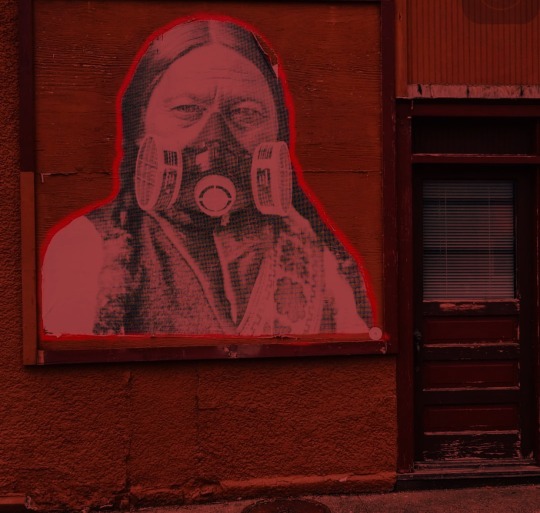
WASN’T HOMELESS BEFORE 1842!
0 notes
Text
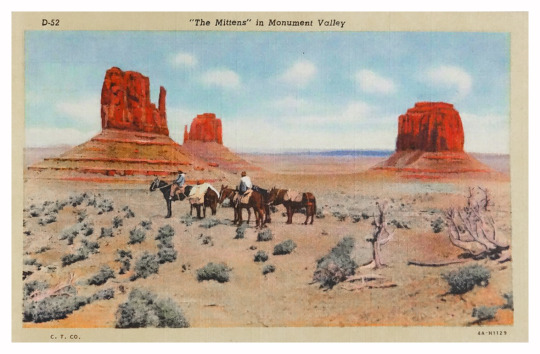
Posts have been very infrequent, but I'm extending my break a little longer for a roadtrip north to Tsé Biiʼ Ndzisgaii. Fresh photos will resume when I return.
#vintage postcard#Americana#Tsé Biiʼ Ndzisgaii#Monument Valley Navajo Tribal Park#Navajo Nation#Arizona#away message
88 notes
·
View notes
Text
not to add to the oppenheimer discourse but i haven’t seen people talking about this in my part of tumblr (i’m sure people ARE, but i haven’t seen it).
a reminder that uranium mining in navajo nation to build nuclear weapons has caused environmental damage and health hazards that have still not been cleaned up to this day. this started in 1944 and lasted until the 80s. cancer rates DOUBLED in the navajo nation from the 1970s to the 1990s.
there are more than 500 abandoned uranium mines on diné land and the government has not done shit to clean anything up.
and to add insult to injury, the supreme court just ruled that the federal government does not have the obligation to ensure that diné people, which the federal government has plenary power over as a tribal nation in the united states, have running water.
the more you scratch at oppenheimer the worse it gets tbqh
#oppenheimer#oppenheimer discourse#i am not native but i work in tribal law and i work in icwa matters#as well as tribal sovereignty issues and tribal government#navajo nation#indigenous rights#tribal sovereignty#diné
251 notes
·
View notes
Text
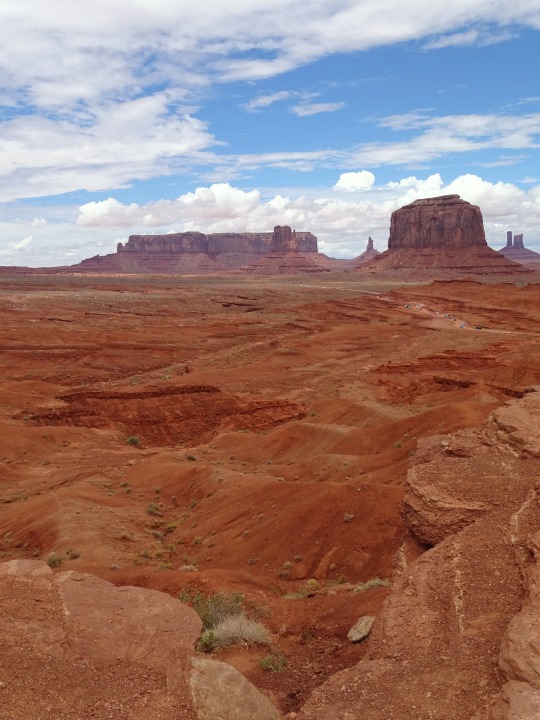
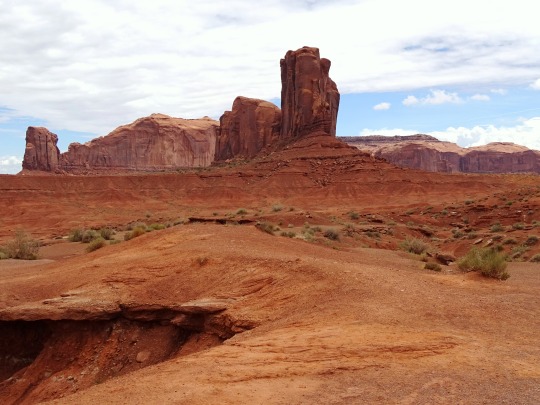



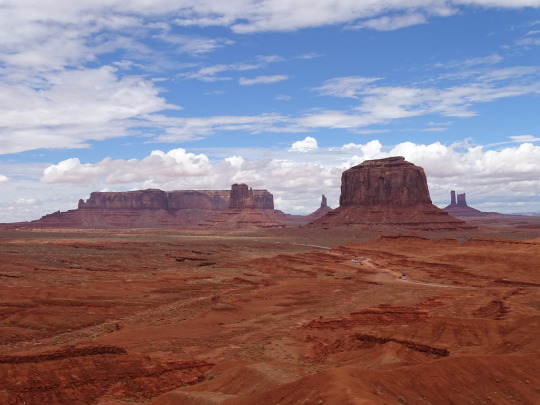




Clouds (No. 1035)
Monument Valley Navajo Tribal Park
#Monument Valley Navajo Tribal Park#Colorado Plateau#Navajo County#Navajo Nation#Southwestern USA#travel#vacation#summer 2022#landscape#countryside#red rock#rock formation#Arizona#USA#geology#desert#grass#blue sky#clouds#tourist attraction#landmark#butte#mesa
140 notes
·
View notes
Text
California’s Yurok Tribe, which had 90% of its territory taken from it during the gold rush of the mid-1800s, will be getting a slice of its land back to serve as a new gateway to Redwood national and state parks visited by 1 million people a year.
The Yurok will be the first Native people to manage tribal land with the National Park Service under a historic memorandum of understanding signed on Tuesday by the tribe, Redwood national and state parks and the non-profit Save the Redwoods League.
The agreement “starts the process of changing the narrative about how, by whom and for whom we steward natural lands”, Sam Hodder, president and CEO of Save the Redwoods League, said in a statement.
The return of the 125 acres (50 hectares) of land – named ’O Rew in the Yurok language – more than a century after it was stolen from California’s largest tribe is proof of the “sheer will and perseverance of the Yurok people”, said Rosie Clayburn, the tribe’s cultural resources director. “We kind of don’t give up.”
For the tribe, redwoods are considered living beings and traditionally only fallen trees have been used to build their homes and canoes.
“As the original stewards of this land, we look forward to working together with the Redwood national and state parks to manage it,” Clayburn said. “This is work that we’ve always done, and continued to fight for, but I feel like the rest of world is catching up right now and starting to see that Native people know how to manage this land the best.”
The property is at the heart of the tribe’s ancestral land and was taken in the 1800s to exploit its old-growth redwoods and other natural resources, the tribe said. Save the Redwoods League bought the property in 2013 and began working with the tribe and others to restore it.
Much of the property was paved over by a lumber operation that worked there for 50 years and also buried Prairie Creek, where salmon would swim upstream from the Pacific to spawn.
Plans for ’O Rew include a traditional Yurok village of redwood plank houses and a sweat house. There also will be a new visitor and cultural center displaying scores of sacred artefacts from deerskins to baskets that have been returned to the tribe from university and museum collections, Clayburn said.
It will add more than a mile (1.6km) of new trails, including a new segment of the California Coastal Trail, with interpretive exhibits. The trails will connect to many of the existing trails inside the parks, including to popular old-growth redwood groves.
The tribe had already been restoring salmon habitat for three years on the property, building a meandering stream channel, two connected ponds and about 20 acres (8 hectares) of floodplain while dismantling a defunct mill site. Crews also planted more than 50,000 native plants, including grass-like slough sedge, black cottonwood and coast redwood trees.
Salmon were once abundant in rivers and streams running through these redwood forests, But dams, logging, development and drought – due in part to the climate crisis – have destroyed the waterways and threatened many of these species. Last year, recreational and commercial king salmon fishing seasons were closed along much of the west coast due to near-record low numbers of the iconic fish returning to their spawning grounds.
The tribe will take ownership in 2026 of the land near the tiny northern California community of Orick in Humboldt county after restoration of a local tributary, Prairie Creek, is complete under the deal.
A growing Land Back movement has been returning Indigenous homelands to the descendants of those who lived there for millennia before European settlers arrived. That has seen Native American tribes taking a greater role in restoring rivers and lands to how they were before they were expropriated.
Last week, a 2.2-acre (0.9-hectare) parking lot was returned to the Ohlone people where they established the first human settlement beside San Francisco Bay 5,700 years ago. In 2022, more than 500 acres (200 hectares) of redwood forest on the Lost Coast were returned the InterTribal Sinkyone Wilderness Council, a group of 10 tribes.
The ’O Rew property represents just a tiny fraction of the more than 500,000 acres of the ancestral land of the Yurok, whose reservation straddles the lower 44 miles (70km) of the Klamath River. The Yurok tribe is also helping lead efforts in the largest dam removal project in US history along the California-Oregon border to restore the Klamath and boost the salmon population.
The Redwoods national park superintendent, Steve Mietz, praised the restoration of the area and its return to the tribe, saying it is “healing the land while healing the relationships among all the people who inhabit this magnificent forest”.
#excerpts#yurok tribe#national parks#California#environment#indigenous rights#tribal rights#land back#national park service#ecosystems#biodiversity#salmon
24 notes
·
View notes
Text
Somebody truly had the nerve to say Roman has never had to deal with or wrestle with injuries/set backs in his career and that he "could never power through like C*dy did with his torn pec". First of all, comparing how these two athletes deal with injuries is big fucking weird but since we're going there and I take my role of #1 Joe Anoa'i defender to heart what I'm not about to do is let y'all set up here on this internet and make it seem as if my Tribal Chief ain't ever fought through shit because this man is a WARRIOR, do you hear me???
(HE'S A TWO TIME LEUKEMIA SURVIVOR SINCE Y'ALL MOTHERFUCKERS LIKE TO FORGET HE KICKED CANCER'S ASS TOO.) Generally speaking, not just that situation but in many others in Joe's life, some of your faves would have folded. (especially those two yt men that run from company to company when they don't get their way) . Really this ain't shade to C*dy, I give him his props for powering through injuries and shit too. Most of these superstars have. And saying some of them would probably fold (hell, I would. Most of us would.) Isn't saying they're weak. I'm saying Roman is a badass on a different level and you can argue with your momma or with the wall on that one, not me.
List of injuries/illnesses known to us throughout Roman's career -
Back + Hip injury 2023 (Sumerslam, v Jey Uso.)
Ruptured Ear Drum 2022 (Survivor Series, v Kevin Owens who surprised him with a spot that was not planned and resulted in the injury. There however is no bad blood between the two.)
Had COVID 2022 (https://www.espn.com/wwe/story/_/id/32974962/roman-reigns-wwe-biggest-star-tests-positive-covid-19-scratched-atlanta-event)
Lingering affects from COVID 2022 (due to being immunocompromised https://www.fightful.com/wrestling/roman-reigns-discusses-his-covid-experience-says-he-still-feels-chest-tightness)
Shoulder/Arm injury 2022 (Wrestlemania 38, v Brock Lesnar)
Reveals Leukemia treatment side effects (including Nausea and arthritis in arms and legs, mentioned in 2019 and 2020 interviews. Ex. https://www.leukaemiacare.org.uk/support-and-information/latest-from-leukaemia-care/inspirational-stories/roman-reigns-wwe-cml-and-me/#:~:text=Previously%2C%20Reigns%20revealed%20to%20the,in%20terms%20of%20being%20sick.)
Knee Injury 2019 (Hell in a cell tornado tag with Daniel Bryan, v Erick Rowan and Luke Harper.)
Second battle with Leukemia 2018
Eye injury, required stitches 2018 (after 6 man tag match on RAW https://www.wrestlingnewsworld.com/wwe/roman-reigns-gets-stitches-raw)
Shoulder injury + Cracked ribs 2017 ( RAW, v Braun Strowman)
Shattered nose + Surgery 2016 ( v Triple H. See attached article https://www.wwe.com/shows/raw/2016-02-22/article/reigns-surgery)
Needed stitches May 2016 (live show, see photos https://www.wwe.com/worldwide/gallery/roman-reigns-receives-stitches-in-melbourne-australia-photos#fid-40042095)
Head Injury that required staples 2014 (https://youtu.be/OYMce1GDiDc?si=KtbVybtoQVr7FKDL)
Emergency surgery for Hernia 2014 (which he wrestled for some time while dealing with, see WWE.com article herehttps://www.wwe.com/shows/nightofchampions/2014/roman-reigns-breaking-news)
This list does not include FCW injuries, football injuries or his 2007 leukemia diagnosis durring which he was unhoused with a child on the way. And these are just the instances we know of!
Say what you will about Roman in kayfabe but do not minimize the struggles Joe has been through or his resilience. And if you're a Roman "fan" buying into the the rhetoric that he hasn't faced any adversity then as my dear friend @love-islike-abomb says, Please "Go whistle in the woods". IYKYK.
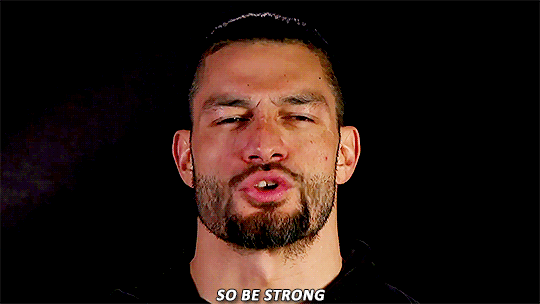
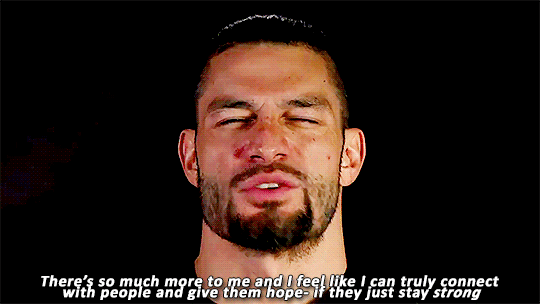

Oh and while we all here...

Acknowledge him, Bitches ☝🏾☝🏾☝🏾☝🏾.
#i will defend joe anoa'i with my life#no shade tho to most of c*dy nation#but be so fuckin for real#roman reigns#the tribal chief#wwe roman reigns#head of the table#the head of the table#the only one#joe anoa'i#the bloodline
22 notes
·
View notes
Text

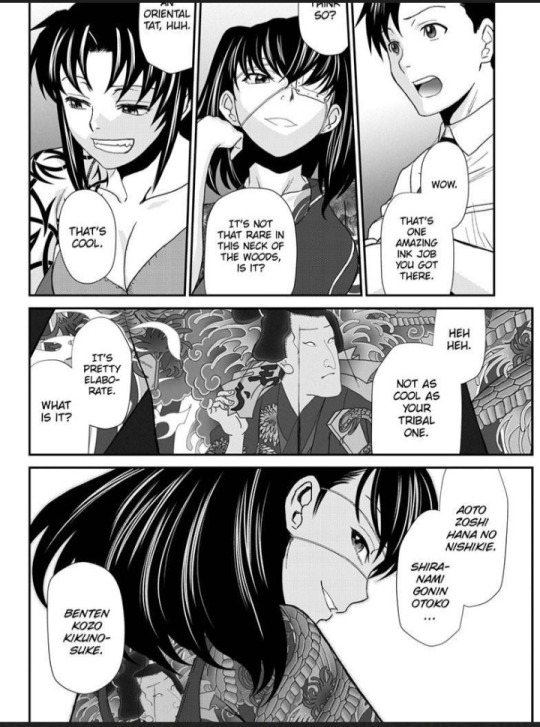
La Majeur's full back Tattoo (chapt. 115)
#La Majeur#Japanese of French Nationality#Rokurou “Rock” “The Gambler” Okajima#Japanese#Lagoon company#Former assassin#black lagoon#Chapter 115#seinen#mentally ill character#gunslinger#rei hiroe#Revy “Two-hands” Lee#Rebecca Lee#chinese-american#Full back Asian tattoo#Japanese tattoos#Asian tattoos#Tribal tattoo#Tribal tattoos#anime & manga#action#crime#thriller#girls with guns
59 notes
·
View notes
Text




Chapter 116
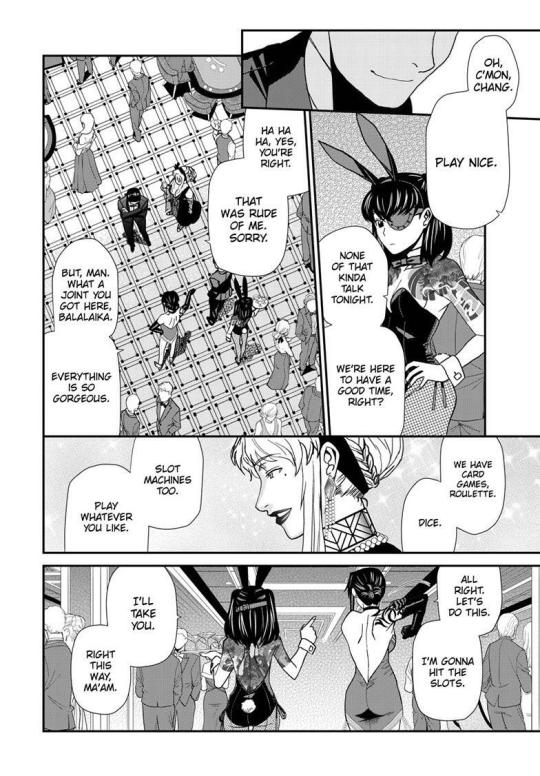
#Chapter 116#Seinen#Black Lagoon#Japanese#Chinese#Chinese-American#Russian#Rokurou Okajima#Rebecca “Revy” Lee#Balalaika Pavlovna#Wai-san Chang#Revy “ Two-hands” Lee#Rock “the Gambler” Okajima#large quarter-sleeved Tribal tattoo#Full back Tattoo#Le Majeur#Japanese of French Nationality#full back tattoo#Arm tattoo#curled tribal tattoo#tribal tattoo
39 notes
·
View notes
Text
#happy tribal nations day#free palestine#macys thanksgiving day parade#boycott black friday#boycott big tech
23 notes
·
View notes